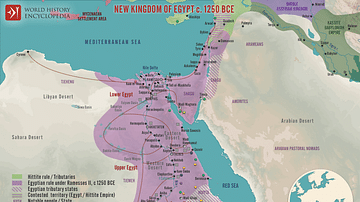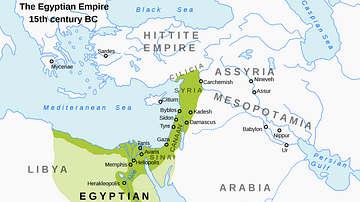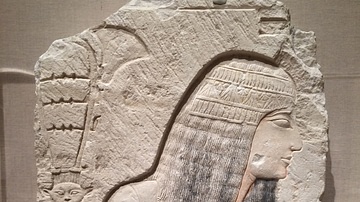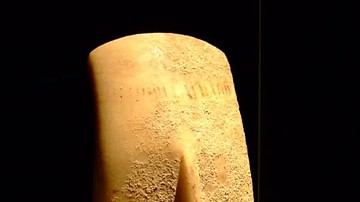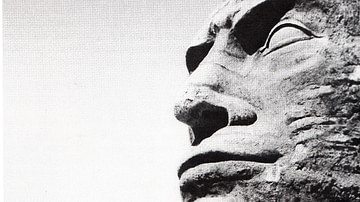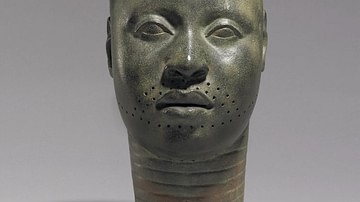Illustration
The Head of Tutankhamun was once part of a larger limestone statue depicting Tutankhamun (r. c. 1336 to c. 1327 BCE) and the god Amun, fashioned during Tutankhamun’s reign, 18th Dynasty, New Kingdom of Egypt.
This statue is significant because it shows that Tutankhamun restored Egypt’s old religion after Tutankhamun's father, Akhenaten had abolished the polytheistic Egyptian religion in favor of the monotheistic worship of the Aten during the Amarna Period. This change caused an uproar in Egypt and the massive religious and social fallout was felt throughout the remainder of the 18th Dynasty.
The hand that can be seen on the back of Tutankhamun's head is the hand of the god Amun. Since Amun (the King of the Gods) is touching Tutankhamun's crown, it can be interpreted that Amun approved of Tutankhamun’s reign. Tutankhamun is wearing the blue khepresh crown which is associated with coronation, the right to rule, and victory.
Metropolitan Museum of Art, New York.
About the Author
Cite This Work
APA Style
Lesar, N. (2021, June 25). Head of Tutankhamun. World History Encyclopedia. Retrieved from https://www.worldhistory.org/image/14339/head-of-tutankhamun/
Chicago Style
Lesar, Nicole. "Head of Tutankhamun." World History Encyclopedia. Last modified June 25, 2021. https://www.worldhistory.org/image/14339/head-of-tutankhamun/.
MLA Style
Lesar, Nicole. "Head of Tutankhamun." World History Encyclopedia. World History Encyclopedia, 25 Jun 2021, https://www.worldhistory.org/image/14339/head-of-tutankhamun/. Web. 28 Apr 2025.



